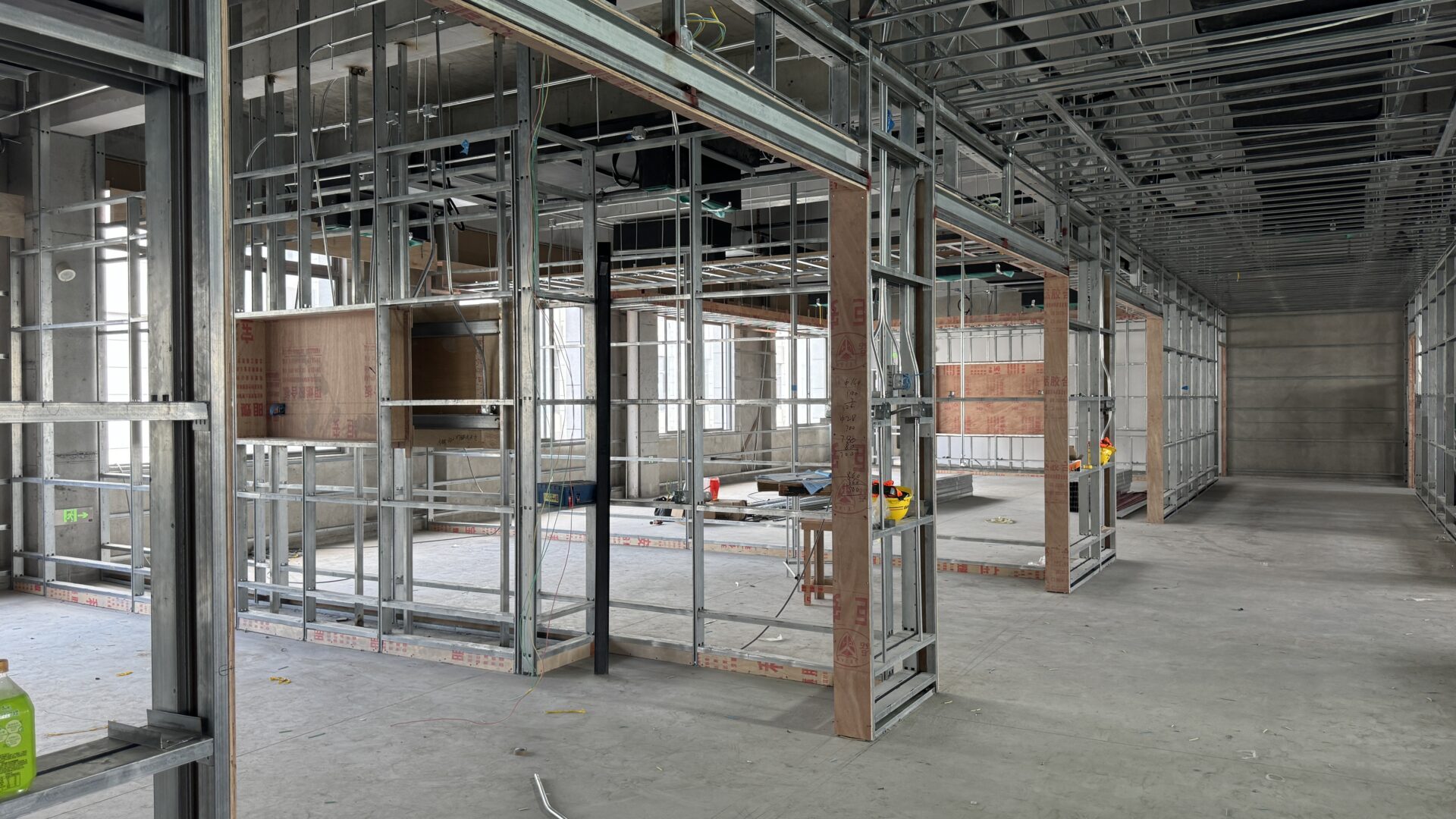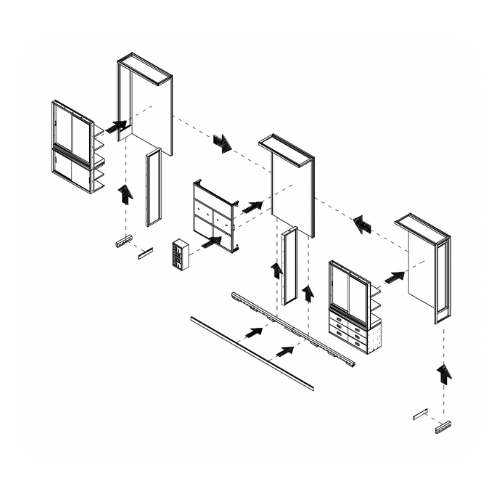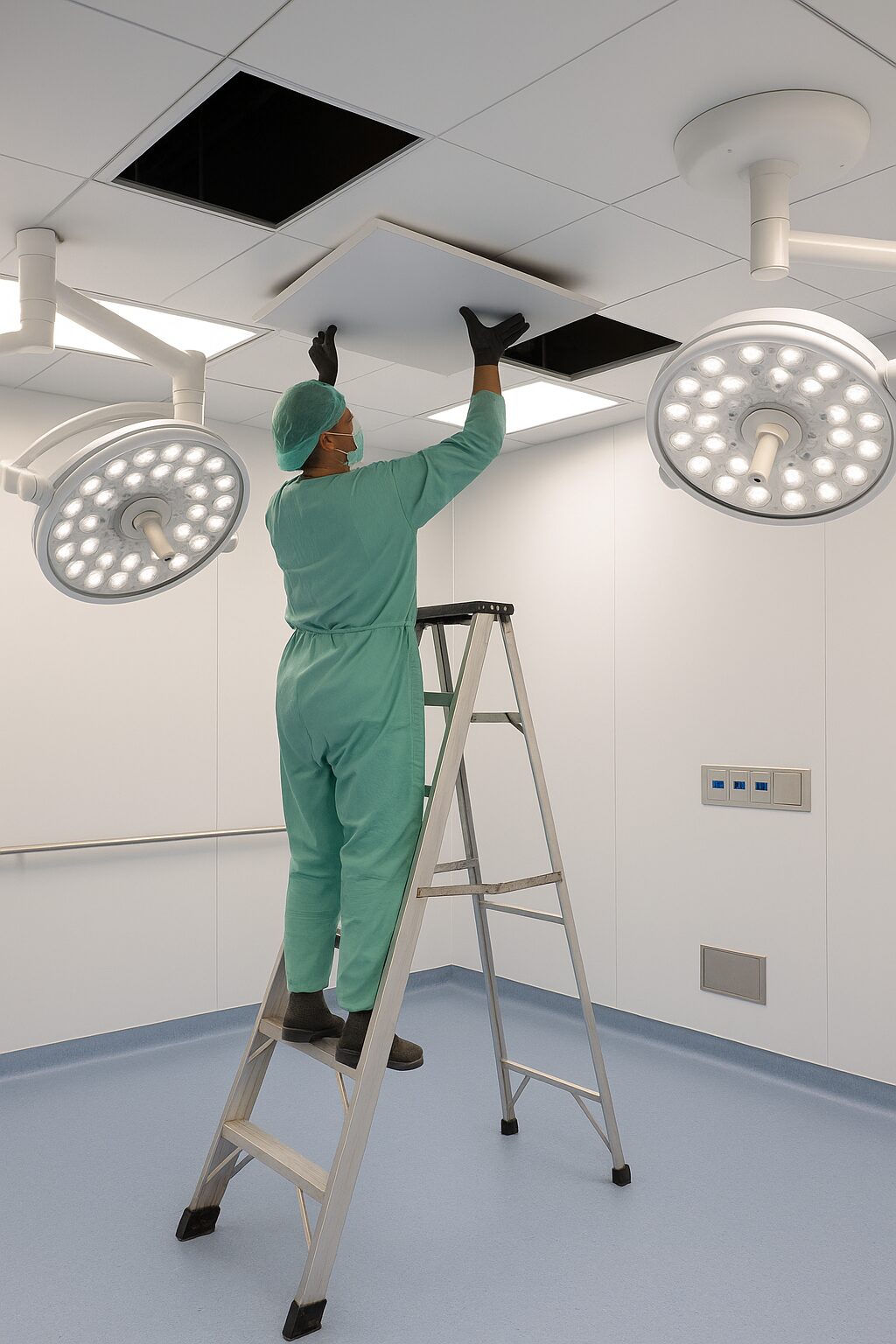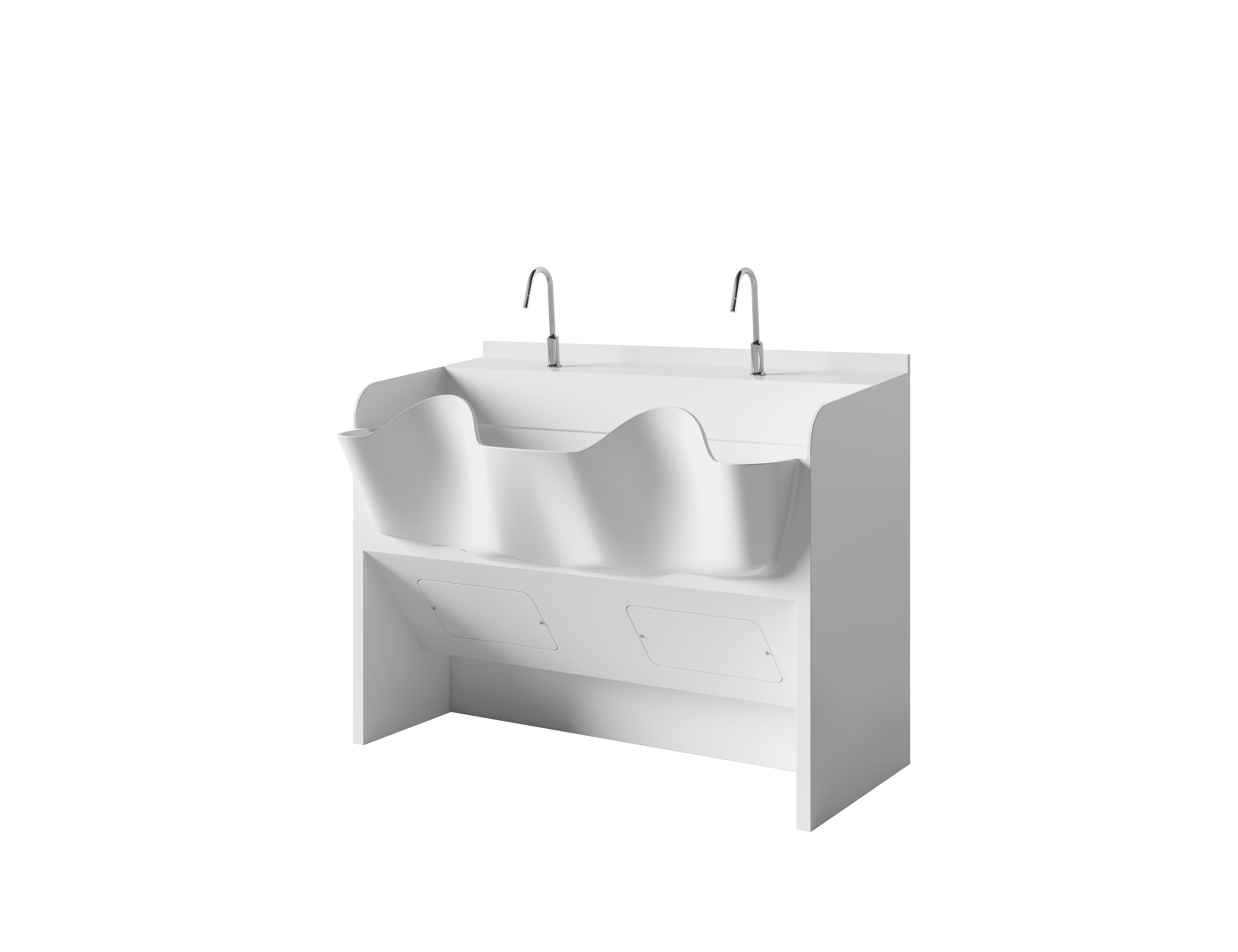
Introduction to Modular Operating Theaters
A modular operating theater represents an innovative approach to surgical facilities, offering enhanced flexibility and efficiency in healthcare environments. Unlike traditional operating rooms, modular theaters are designed as prefabricated units that can be easily assembled and disassembled. This unique construction method allows healthcare facilities to adapt and scale their surgical capabilities according to fluctuating demands, making them particularly valuable in times of crisis, such as during public health emergencies or in response to an influx of patients.
The inherent design of modular operating theaters enables rapid deployment and relocation, facilitating immediate access to advanced surgical facilities where they are most needed. These units can be integrated into existing infrastructures or positioned in temporary settings, ensuring that surgical operations can continue without significant delays. In addition, the modular design facilitates customization, allowing healthcare providers to prioritize specific functionalities that align with their unique operational needs. This adaptability not only enhances the overall surgical experience for teams and patients but also improves workflow efficiency.
Moreover, the importance of proper installation in modular operating theaters cannot be overstated. An expertly installed modular theater ensures that stringent health regulations and safety standards are met, which significantly affects patient outcomes. Elements such as air filtration, sterile environments, and specialized equipment must be meticulously integrated into the installation process. A well-executed installation translates into optimal surgical conditions, minimizing the risk of infections and complications, and ultimately leading to better surgical results.
As we delve deeper into the step-by-step installation guide, it is vital to recognize how the features and benefits of modular operating theaters position them as crucial components in modern healthcare. By embracing this innovative solution, healthcare facilities can respond effectively to the evolving challenges of surgical care.
Pre-Installation Planning
Before embarking on the installation of a modular operating theater, thorough planning is essential to ensure a seamless and efficient process. The first step involves assessing the space requirements. It is critical to measure the designated area accurately, taking into account not only the dimensions of the modular units but also the surrounding space for workflow, equipment access, and emergency exits. This assessment helps identify potential limitations or adjustments that may need to be addressed prior to installation.
Once the space has been evaluated, the next phase is determining layout configurations. A well-thought-out layout promotes operational efficiency and enhances the surgical team’s workflow. During this process, it is vital to consider the placement of surgical lights, anesthesia machines, and other critical equipment within the modular theater. Coordination with the surgical staff is key in this stage; their input can guide the decision-making process in terms of optimal configurations based on their daily routines and specific procedural needs.
Obtaining the necessary permits is another crucial step in pre-installation planning. It is important to engage with local regulations early in the process to ensure that all construction meets healthcare standards and legal requirements. Licenses and approvals from relevant authorities must be secured, as failure to do so can lead to delays and potential legal complications during or after installation.
Finally, effective coordination with all stakeholders, including surgical staff, suppliers, and contractors, is paramount. Organizing regular meetings ensures that everyone involved is aligned on project objectives, timelines, and responsibilities. This collaborative approach not only aids in problem-solving but also supports the integration of diverse perspectives, ultimately contributing to the successful installation of the modular operating theater.
Tools and Materials Needed
When embarking on the installation of a modular operating theater, having the right tools and materials is essential to ensure a seamless and efficient setup. This undertaking involves both construction and medical equipment, which together facilitate a sterile and functional environment for surgical procedures.
To begin, construction tools play a vital role in the assembly of the modular components. Essential items include a power drill with various attachments, a level to ensure proper alignment, measuring tape for accuracy, and a hammer for securing materials. Additionally, safety equipment such as gloves, goggles, and hard hats should not be overlooked during the installation process. These items help to protect the workers and maintain a safe working environment.
Next, the materials required for a modular operating theater installation encompass a variety of prefabricated components. Typically, this includes wall panels designed for easy assembly and disassembly, ceiling tiles that promote sterile conditions, and flooring that complies with healthcare standards. In many cases, insulation materials are necessary for soundproofing and thermal regulation, ensuring that both doctors and patients experience optimal comfort.
Furthermore, specialized medical equipment is crucial for the operating theater’s functionality. Surgical tables, lighting systems, and anesthesia equipment must be appropriately sourced to meet the specific needs of the facility. It’s essential to collaborate with healthcare professionals to determine the best type of equipment required, as this can vary depending on the surgical specialties practiced in the modular operating theater.
In conclusion, a thorough understanding of the necessary tools and materials not only streamlines the installation process but also contributes to creating a safe and efficient operating environment conducive to successful surgical outcomes.
Site Preparation
Preparing the installation site for a modular operating theater is a critical step that requires careful planning and execution. The first aspect of site preparation is ensuring that the area is clean and free from any debris that could obstruct installation. This involves removing any unwanted materials, clearing the workspace, and ensuring that access routes are clear for the delivery and assembly of the modular units.
Next, it is essential to inspect the structural integrity of the building where the modular operating theater will be installed. This inspection should focus on the foundation, walls, and roof to guarantee that they are capable of supporting the additional weight and requirements of the theater. Any signs of damage or weakness may require repairs before the installation can proceed. Engaging with a structural engineer can be beneficial, as this expert can provide insights into any necessary reinforcements or modifications.
Additionally, a thorough evaluation of essential utilities is vital. This includes an assessment of the plumbing and electrical systems to ensure they can accommodate the specific needs of a modular operating theater. The plumbing system must support medical gases, drainage systems, and water supply lines that are instrumental in a surgical environment. Likewise, the electrical system should be capable of providing adequate power for advanced surgical equipment without risking overloads or failures. Coordination with utility professionals to verify that these systems meet local codes and standards is recommended.
Finally, it is advisable to familiarize the installation team with the specific requirements of a modular operating theater. This preparation ensures that all parties understand the project’s scope and can address any potential challenges proactively, paving the way for a smooth and efficient installation process.
Installation of Modular Components
Installing a modular operating theater is a multifaceted process that requires careful attention to detail to ensure safety, stability, and compliance with health regulations. The installation begins with the assembly of the walls, which are typically prefabricated and designed for durability and ease of handling. Start by preparing the site, ensuring that the foundation is level and clean. Align the wall panels according to the manufacturer’s specifications, using appropriate tools such as laser levels and measurements to guarantee accuracy. Secure each wall panel to the foundation using anchor bolts, ensuring that they are tightly fitted for maximum strength.
Once the walls are securely in place, the next step is the installation of the ceiling modules. These components not only support lighting and ventilation systems but also contribute to the overall sterile environment of the operating theater. Begin by attaching the ceiling grid to the top edges of the wall panels, ensuring it is level and properly secured. Then, carefully place the ceiling tiles or panels into the grid, making any necessary electrical connections for lights or fans at this stage. Consideration should also be given to the installation of soundproofing or insulation materials if required by the specifications.
Finally, the installation of the flooring is critical to completing the modular setup. Select flooring materials that are anti-slip, easy to clean, and resistant to chemicals used in medical settings. Begin by laying down a moisture barrier, if needed, followed by the flooring panels interlocking them securely according to the guidelines. After the installation of the walls, ceiling, and floors, conduct a thorough inspection to confirm that all connections are secure and compliant with safety standards. Proper installation of these modular components not only facilitates an efficient workflow but also ensures that the operating theater meets all necessary regulations.
Integration of Medical Equipment
Integrating essential medical equipment into a modular operating theater requires meticulous planning and execution to ensure optimal functionality and safety. The primary components include surgical lights, anesthesia machines, and monitoring equipment, all of which must be installed to meet specific operational guidelines. Each piece of equipment plays a crucial role in the surgical process, and careful attention is needed during the integration phase.
Firstly, the installation of surgical lights is critical, as they provide the necessary illumination for precise operations. When selecting surgical lights, consider the type and size of procedures that will take place in the theater. The lights should be adjustable and installed in such a way that they do not cast shadows on the surgical field. This may involve adequate mounting solutions and ensuring that the electrical connections comply with regulatory standards. Moreover, the positioning should allow for easy access by surgical staff without compromising the workflow.
Next, anesthesia machines must be integrated with a focus on ergonomics and accessibility. These machines require reliable gas supply lines and must be positioned for the anesthetist’s comfort during procedures. Additionally, it is paramount that these machines adhere to clinical guidelines to prevent any risk of incorrect administration of anesthetics. Supply lines should be validated to ensure there are no leaks, and all safety alarms and monitoring systems should be duly functional.
Finally, integrating monitoring equipment is essential for tracking patient vitals throughout surgery. This includes multi-parameter monitors that provide real-time data on heart rates, blood oxygen levels, and other critical metrics. The placement of this equipment should allow for clear visibility to the surgical team and ensure that connections are secure and in compliance with medical device regulations. It is vital to conduct thorough testing of all installed equipment before the operational theater opens, ensuring everything functions seamlessly together.
Electrical and Plumbing Setup
Setting up an electrical and plumbing infrastructure is a critical step in the installation of a modular operating theater. This process requires meticulous planning and execution to ensure that the facility operates efficiently and safely, catering to the demands of surgical procedures.
The electrical system must be designed to meet the specific needs of operating theaters. This includes adequate lighting, powered surgical equipment, and emergency backup systems. Initially, it is essential to determine the power requirements based on the equipment that will be utilized. Power loads should be calculated to avoid overload and ensure the system can handle peak usage without interruption. Additionally, outlets must be strategically placed throughout the operating room to facilitate easy access to equipment while adhering to safety regulations.
When wiring the electrical system, it is crucial to use materials that are rated for medical environments, as they must be resistant to moisture and interference, minimizing the risk of accidents. Ground fault circuit interrupters (GFCIs) should be installed to provide protection against electrical shocks. The overall layout should prioritize efficiency and accessibility, while also ensuring compliance with local electrical codes and standards.
Simultaneously, the plumbing setup is of equal importance. The operating theater must have a reliable and sterile water supply, as well as adequate drainage systems. Cold and hot water lines should be installed, ensuring that surgical staff can maintain hygiene protocols. Fixtures such as sinks should be placed in convenient locations, allowing for easy access before and after procedures. Additionally, waste management systems must be integrated to handle medical waste, ensuring compliance with health regulations.
In conclusion, both electrical and plumbing setups are essential components in creating a fully operational modular operating theater. Careful planning and adherence to regulatory standards are vital in ensuring that these systems operate efficiently, contributing to successful surgical outcomes.
Final Inspections and Adjustments
Upon completing the installation of a modular operating theater, it is essential to conduct a series of final inspections and adjustments to confirm that the theater meets all operational and regulatory requirements. This critical step plays a vital role in ensuring the long-term functionality and safety of the surgical environment. Proper inspections encompass several key areas, including structural integrity, equipment functionality, and adherence to health regulations.
Firstly, inspecting structural integrity involves a thorough assessment of the modular components to confirm that they are securely fitted and robust enough to withstand the rigors of daily use. This includes verifying that walls, ceilings, and floors are sound and adequately insulated. It is also important to check for any potential leaks, cracks, or imperfections that could compromise the theater’s performance. Such diligence can help prevent future maintenance issues and ensure a safe environment for both medical staff and patients.
Next, the functionality of all equipment within the modular operating theater must be meticulously examined. This includes surgical lights, anesthesia machines, and sterilization units, among others. Each device should be tested to ensure it meets both operational standards and manufacturer specifications. Regular equipment checks and calibration enhance performance and reduce the risk of malfunctions during critical procedures.
Finally, compliance with health regulations and standards is paramount. This encompasses confirming that the modular operating theater adheres to local and national health codes. Necessary documentation, such as inspection reports or certifications, should be obtained and reviewed. Engaging with regulatory bodies may also be required to guarantee that all safety measures are in place, thereby facilitating a smooth operational process.
In conclusion, thorough final inspections and adjustments are necessary steps in the installation process of a modular operating theater. They help ensure that structural integrity, equipment functionality, and compliance with health regulations are all adequately addressed, setting the foundation for a safe and effective surgical environment.
Training and Operational Readiness
Training protocols for surgical staff in a modular operating theater are paramount to ensuring optimal performance and operational readiness. As the healthcare landscape evolves, so too do the complexities of surgical environments. Modular operating theaters are designed to be flexible, efficient, and equipped with cutting-edge technology. Therefore, it is essential for the surgical team to receive comprehensive training on the proper use and operation of these advanced facilities.
The first step in the training process involves familiarization with the new layout of the operating theater. This includes understanding the spatial arrangement of equipment, such as surgical tables, lighting, and monitoring devices. Engaging in hands-on orientation sessions allows the surgical staff to navigate the environment confidently and ensures that team members know the location and functionality of each piece of equipment. Familiarity with the layout contributes significantly to the efficiency of surgical procedures, reducing the time taken to find essential tools and instruments.
Furthermore, technology plays a vital role in modern surgical environments. The integration of advanced surgical devices, imaging equipment, and electronic medical records necessitates technical training to empower staff to utilize these tools effectively. Conducting workshops that focus on specific technological components can enhance the surgical team’s capability to operate these devices seamlessly during procedures. This not only optimizes workflow but also ensures patient safety, as all staff members will understand how to manage equipment malfunctions or emergencies.
Finally, simulation exercises should be incorporated into the training regimen. These exercises provide opportunities for surgical staff to practice real-life scenarios in a controlled environment. This preparatory step is crucial for fostering teamwork and developing effective communication amidst potential stressors that can arise during surgeries. By prioritizing training protocols and operational readiness within the modular operating theater, healthcare institutions can ensure a proficient surgical team that is well-equipped to deliver high-quality patient care.








